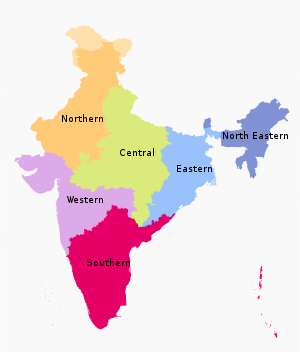Zones of India

| This article is part of a series on the |
| Politics of India |
|---|
 |
|
|
Eastern Zonal Council is a zonal council that comprises the states of Bihar, Jharkhand, Odisha and West Bengal. [1] [2]
The States have been grouped into six zones having an Advisory Council to foster cooperation among these States. Five Zonal Councils were set up vide Part-III of the States Reorganisation Act, 1956. [3] [1] [2]